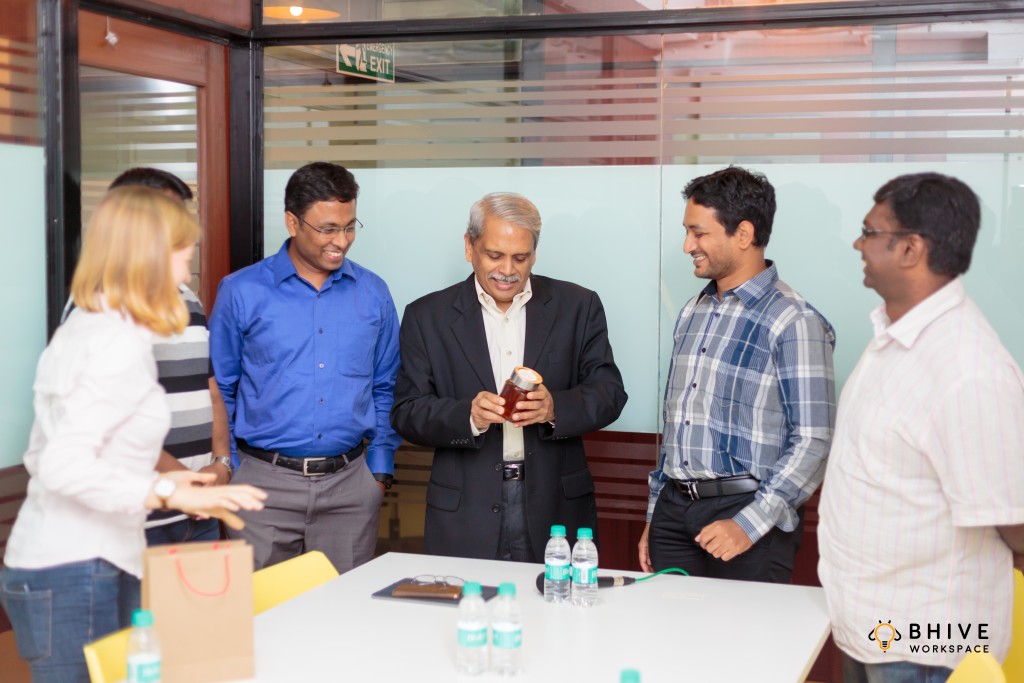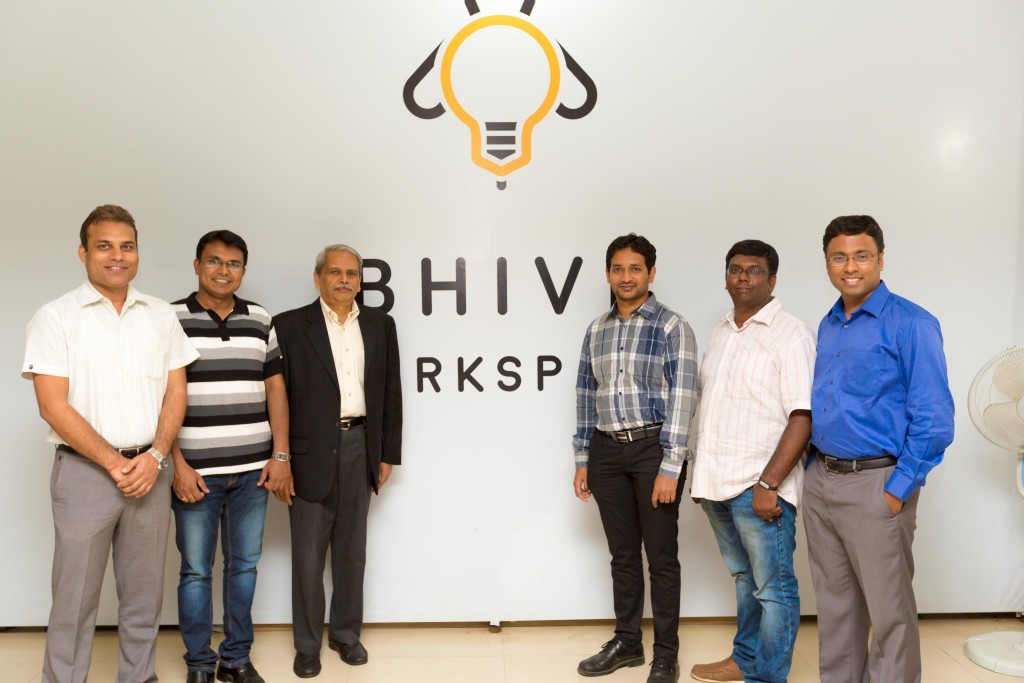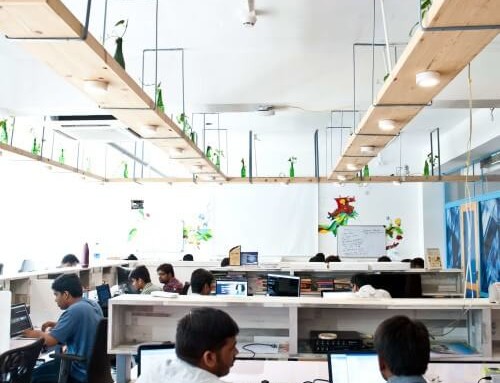Kris Gopalakrishnan – A quick catch-up


Kris Gopalakrishnan talks to BHIVE!
Infosys has evolved into one of the most successful Indian companies in the world, but tell us about how it all started? What did you want to build and what was the impact you intended to create when you were building Infosys?
One, we wanted to build something in India, using the talent that’s available in India, because we strongly believe that we have exceptional talent in India. Second, we wanted to create a respected corporation.
In fact we didn’t have big thoughts about impact and all that stuff. Because we never thought it would be so big. So we said that we will create a respected company, a company that will earn respect from its customers, its employees, its partners, society, govt, etc. that was our goal.
As things evolved, the environment changed- the environment when we started in 1981 was very different, India was a closed economy. In fact, in that sense we couldn’t have dreamt big. Because you know first generation venture becoming big was unheard of. But as we grew, as we became financially strong, we could dream bigger and that’s what we kept doing. Every 5 years of so, we sat down, and reimagined where we want to be, where we could be and we planned to get there. And that’s how we set 5-year goals and went about building the company.

How did Kris Gopalakrishnan take Infosys from Bangalore to the world?
First and foremost, from day 1 we wanted to be a global company. Infoys’s genesis was to take India to the world, take Bangalore to the world. Our first customer was a US customer, even today, less than 3 percent revenue comes from inside India, 97 percent comes from outside India. So we wanted to create a global company, with a registered office in India. We wanted to create a global company with employees from everywhere in the world, offices everywhere in the world but with a registered office in India.
Milestones? Getting the first customer itself. Surviving as a business. The first 10 years was all about surviving. Surviving, staying together as a business and a building a sustainable business.
The next 10 years was about building the foundation, because after the economy opened up, it gave companies like Infosys a lot of freedom. So we raised money by doing an IPO in India, subsequently we did an IPO in the US. We set up the various departments that we needed to create an institution like education, research, quality, finance, all the ingredients that are necessary to create a quality institution. And that is when the opportunity came in 1997, to scale up rapidly, when India started attracting global companies to outsourced their work to India.
There was a need for IT work because of Y2K and because of the internet boom- globally there was a demand for software professionals. We clearly saw that opportunity, were well prepared, we had done the IPO, we had done all the foundation work and we built a quality institution. We were able to rapidly grow and we were growing more than 100 percent year on year for many years. The first billion dollars took 23 years, the second billion dollars in revenue took 23 mins and the third billion dollars took 30 months. So that’s how we accelerated
And during this entire journey, as a leader, what were your biggest worries, Mr. Kris Gopalakrishnan?

Different phases, different worries. In the beginning it was about survivial. After then it was about competition and building a world class company. In 1993, the government opened up the IT sector for 100% FDI. IBM, Oracle, every major technology company came to India. Many people said that that was the death of India technology companies. So we had to prove, that we could compete.
One of the reasons for listing on NASDAQ was to showcase the company, the financial performance of the company on the most demanding financial market in the world, which is on US exchange. And if on that exchange, you can prove that your performance is superior to your competition, everyone will notice you.
So the second thing was about competition, and there are of course the crisis in 1995, we lost the GE contract. GE was 25% of our revenues, 40% of our markets, and we had to quickly recover from that. We had already done the IPO and once you are a public company, to lose a big contract was a big challenge. But we recovered, continued to grow from strength to strength. In 2007- 2008 for example, and that was when I took over as CEO, the financial crisis happened.
We had given 25,000 offers in campuses, and our growth came to almost zero. But we still said that we will honor the offers, we increased the training period for them from 3 months to 6 months, gave them training on two technologies and absorbed all of them. So those are examples of the challenges we had to face, and luckily for us, we took the right decisions
Moving on to a slightly more personal note, what were the sacrifices you had to make?
The company has to come first. In order to build something world class, an institution, you have to take extraordinary risks and put in extraordinary efforts. Personally, you have to commit a 100% of your time, so family life suffers. And without family support, you can’t be where you are. So I had an understanding family and they supported me very well and that helped me very well. Second, everything in the world revolved around Infosys.
We made a commitment that we will not sit on the board of another company, we will not make any other investments as long as we are executives in the company. There should not be any conflict of interest, there should not be any distraction and we will work only for Infosys and to make Infosys successful. Third, we said, no family will ever be a part of the company. 7 of us started the company and if each of us started bringing in people, then it will become a family run company. So we said, no we will not bring family members. We set simply rules and dealt with sacrifices.
Has Kris Gopalakrishnan seen the start up community evolve over the years?
Bangalore has a good place in the entrepreneurial ecosystem, the first wave of entrepreneurs happened way back in the late 70s, early 80s, and that’s when Infosys and Wipro started. The second wave happened with the Internet boom, somewhere in the late 90s, early 2000s. And when the Internet bubble burst, many organizations died immediately. The third wave happened around 2008, again the financial crisis created a problem. But this wave, I think in the last four years, has learnt from all the lessons.
We have created a critical mass here, and I think this wave of start ups are going to take Bangalore further, and India further. I am very hopeful. I think Bangalore is unique and I think that it has more than a million IT professionals. No where in India is that there. In the sense of creating the talent and the professions I think it is there in Bangalore.
In terms of the infrastructure, Bangalore is weak. Commute times of 2 hours and travelling from one end of Bangalore to another end, it’s a challenge. And that definitely can hurt the city. Office spaces are available, co working spaces like BHIVE, I think they are coming up and they are providing a unique environment that is necessary. Accelerators like Axilor have also started coming, Microsoft and SAP have also started accelerators. Even user companies are setting up accelerators, so that they can pick and chose companies they can support.
So, Bangalore is very unique in the sense that there are more than 60 R&D departments of MNCs in the city, not even Silicon Valley has that. That is very unique. And if you have a problem on a Microsoft code, or a SAP code, you don’t have to go somewhere else in the world, you just go to Whitefield and you will find the answer! So Bangalore has a wonderful ecosystem, there are some infrastructure challenges, there are limited co working spaces, but we are working on that. But slowly, the community is developing. Providing that unique way of helping each other.

With all the gaps that exist today, in the Indian start up ecosystem. What do you see Axilor coming in and bridging?
So our goal is to share our experience, mentor startups and increase their cohort for success. We have three programs, the first is the accelerator batch which every 100 days or so we will run. We select probably 10-15 companies, very early stage. Some people will just have an idea and we help them create a viable business around it. Second, we invest in those companies. The level of investment changes. From the accelerator, we progress to taking their prototype and launching their product, from launch to scale. Accelerator batch started once in 100 days, now we are taking application for the next batch.
Finally, what is the next big thing that investors should keep an eye out for?
Fortunately there are several opportunities for disruption, for transformation. Every single sector we can see will see change, be it healthcare, be it real estate, office space and of course with e-commerce we are already seeing it. Every single industry sector will see transformation over the next 20- 30 years. So there is huge opportunity. India being a large market, that’s again very attractive. Just look at the rural markets, the size is there. So there are so many opportunities to invest. And technology, especially IT, it is increasing. With IOT, the explosion of big data, where cloud is growing, social networking and collaboration is growing.

About Axilor:
Founded by some of the most respected entrepreneurs, Axilor helps founders improve their odds of success through its programs and a unique venture funding mode







